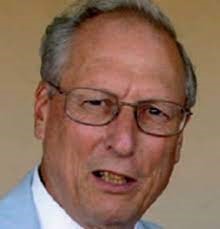
On May 13, 2022, RSAI lost one of its intellectual heroes. Arthur Getis, born in Philadelphia, passed away at the age of 87. Arthur Getis was the President of WRSA in 1999 and an active participant in RSAI Congresses around the world for several decades. He was President-Elect of the University Consortium for Geographic Information Science in 2001 and has served on several university faculties, including San Diego State University (1990–2004), the University of Illinois at Urbana-Champaign (1977–1990), Princeton University (1971–1974) and Rutgers (1963–1977). He worked for briefer time periods at Harvard with Walter Isard, the father of Regional Science.
Arthur received his BSc and MSc degrees from Pennsylvania State University. He earned his Ph.D. focused on the theoretical and empirical inquiry into the spatial structure of retail activities from the University of Washington in 1961. His Ph.D. thesis highlighted his primary research focus on understanding how individual behaviors manifest in spatial patterns.
At Rutgers, he wrote the classic book, Models of Spatial Processes with his student Barry Boots. The book, published in 1978, is still cited as representing fundamental concepts about geographic space. While at Rutgers, he became known for his seminal work on the nature of point patterns, where the patterns represent objects in geographic space. He pioneered and helped develop the field of spatial analysis at Rutgers University's Livingston College and laid the groundwork for developing spatial studies at Princeton University.
In 1977 Arthur left the Chairmanship at Rutgers to head the Department of Geography at the University of Illinois at Urbana-Champaign. During those years, he worked on papers that significantly contributed to the literature on patterns of spatial association patterns, K-function analysis, and urban research.
Arthur moved to San Diego State University in 1990, where he directed the joint Ph.D. Program with the University of California at Santa Barbara and then served as the Birch Chair of Geographical Studies. At the same time, Arthur collaborated with Keith Ord, an internationally known statistician, to produce a new family of spatial statistics called local spatial statistics, as opposed to the global statistics such as Moran's and Geary's autocorrelation statistics. These statistics became known as Getis-Ord G statistics, applied in several fields using spatial data, including public health. Arthur used these statistics in his research on the transmission of dengue fever in Peru and Thailand, supported by the US National Institutes of Health. The US National Institute of Child Health and Human Development supported his seminal research on public health in Ghana.
His ground-breaking methodological papers with Keith Ord on The Analysis of Spatial Association by Use of Distance Statistics and Local Spatial Autocorrelation were published in Geographical Analysis 1992 and 1995, respectively. These contributions have sparked some of the most exciting developments in spatial statistics and regional science, generating Arthur's world-renowned reputation. The numerous Google citations of these papers attest to his scholarly impact and global influence. The Getis-Ord statistics are now widely used by researchers worldwide to study patterns of the diffusion of disease, spatial clustering of economic attributes, and the grouping tendencies of land uses when spatial data sets are enormous.
And at San Diego State University, he has been primarily influenced by the technical advances in developing geographic information systems (GIS). In this new field, he has published several papers, collaboratively with Luc Anselin from UCSB (University of California, Santa Barbara), that yielded unique insights into the spatial analytical potential of the new technology. He also collaborated with Michael Goodchild, the leading GIS researcher at UCSB, on the broader dissemination of foundational GIS materials at workshops around the US.
Arthur Getis was (elected) Secretary of the 500-person Commission on Mathematical Models of the International Geographical Union (1988–1996). As Chairman of this Commission, I have had the great pleasure of closely collaborating with him, planning scholarly meetings in Canberra, Shanghai, Beijing, Prague, Bratislava, Odessa, The Hague, Boston, Washington, and Princeton, and engaging in developing research relations between members from different parts of the world. We also joined forces to launch a new methodology publication outlet in 1994, the Journal of Geographical Systems (and its predecessor Geographical Systems). Arthur Getis served as one of the editors-in-chief and then as an honorary editor. One of the distinctive features of this journal is its distinct focus on the interface between modeling, statistical techniques, and spatial issues in a broad spectrum of related fields.
Arthur's professional interests in education synchronized with his wife, Judy. Arthur and Judy won the National Science Foundation's Post-Sputnik High School Geography Project, designed to improve geographical education in America's schools. Their interest in education led to the publication of a leading textbook on geography with co-author Jerome Fellman. This foundational geography textbook in the United States is now in its 18th edition, a testament to its relevance today.
Arthur was the recipient of a long list of awards, amongst them were the Fellows Award (2005), the Jean-Paelinck Award (2017), the Founder's Medal (2012) from the RSAI, the Walter Isard Award for Distinguished Scholarship from NARSC, and the Aageenbrug Award for Career Achievements (2008) from the GIScience Specialty Group of the Association of American Geographers. These awards recognize the attainment of outstanding scholarly excellence and demonstrate his international recognition in regional science, geography, and GIScience.
Arthur Getis has been not only a brilliant regional scientist but also a magnificent human being –a dedicated teacher, admired by his students, an impressive scholar, committed to the ideals of academia, highly respected by his colleagues, a gentle and generous spirit, and warm and sensitive human personality. Arthur was a wonderful friend to many of us. His passing is a tragic loss to the regional science community, and we shall greatly miss but certainly not forget him.
Art leaves behind his children, Hilary GetisTarazi, Victoria Lynn Getis (Boyle) and Anne Patterson Tibbetts. And seven grandchildren, Abigail Grace Boyle, Sophia Noel Tarazi, Hannah Claire Boyle, Christina Hope Tarazi, Darby Constance Tibbetts, Trevor Patterson Tibbetts, and Matthew Getis Tibbetts.
Manfred M. Fischer
Professor Emeritus, Vienna University of Economics and Business
